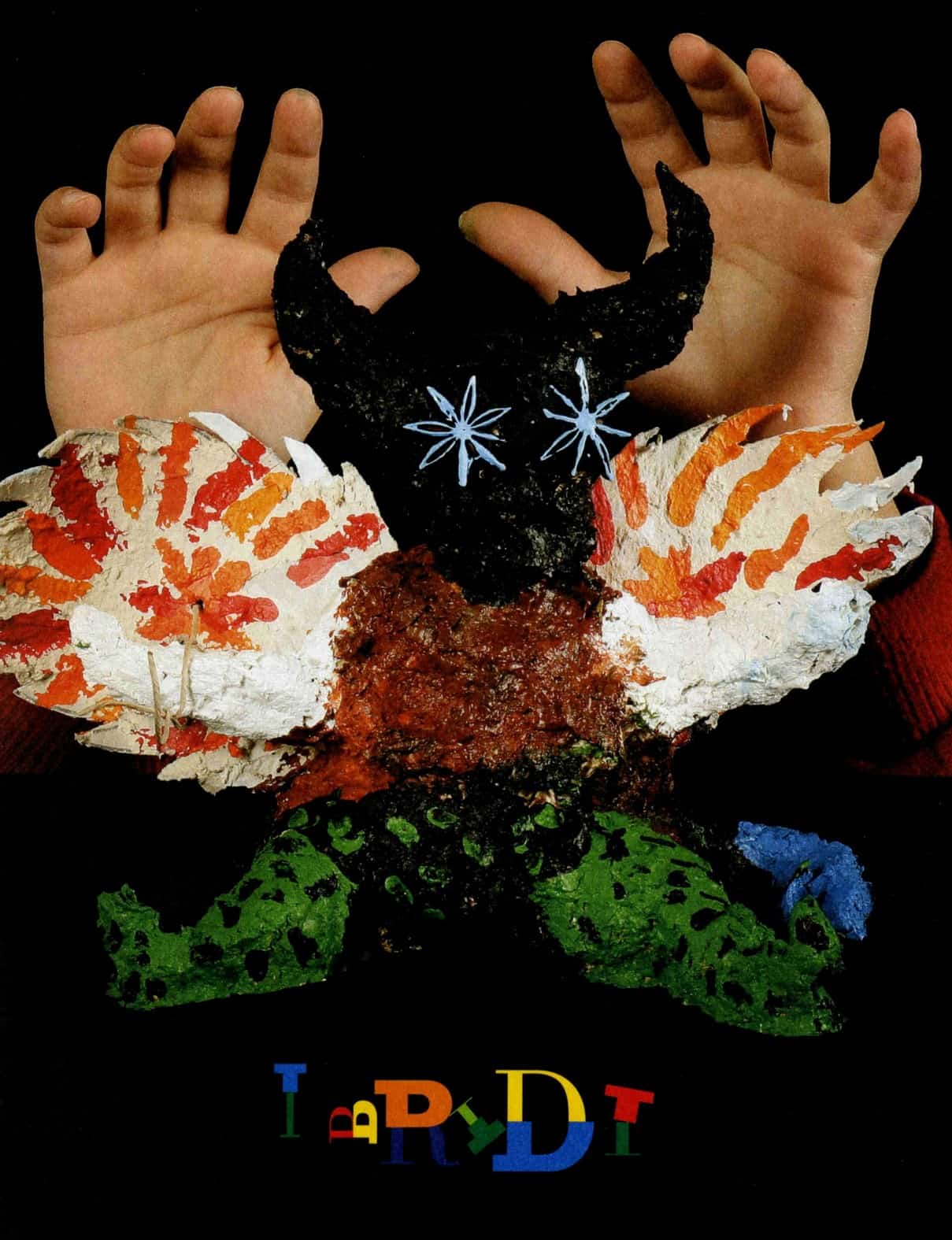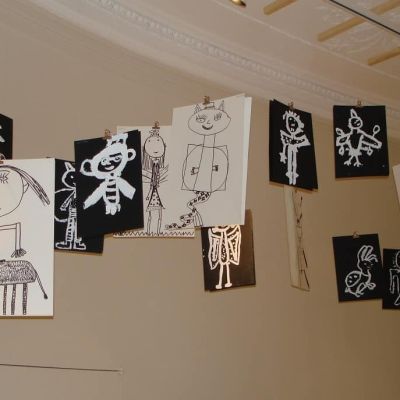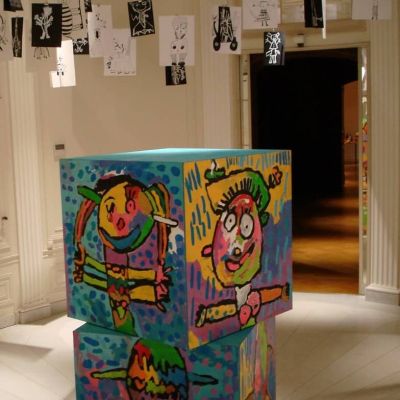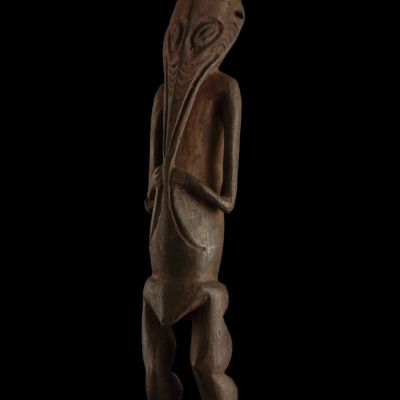HELENEUM – LUGANO
Over a period of six months, the children of four primary school classes in Lugano (Molino Nuovo, Barbengo, Ruvigliana, Davesco) and one kindergarten class (Breganzona), supported by their teachers and teaching staff, explored the concept and meaning of ‘hybrids’ at length through a series of visits to the museum and in-depth studies in the classroom. Western culture is accustomed to seeing ‘hybrids’ as monstrous beings, aborted forms of a metamorphosis or a failed transformation. In simple cultures, to which the MUSEC works testify, hybridisation is instead a positive factor: a hybrid is a being endowed with its own identity that possesses the sum of the characteristics (positive and negative) of the beings or objects that compose it. The starting point for the work were ethnic works of art, especially those from the Melanesian area, in which representations of beings resulting from hybridisation between humans and animals, between humans and plants and between humans and objects, as well as mixtures between plants and animals, are widespread. At the end of the educational journey, the Kindergarten children created a work that playfully ‘reconstructs’ 16 different hybrids, while each Primary School child produced a sculpture depicting ‘their’ hybrid: the outcome of an inner search for forms in which different identities find a final solution, the manifestation of their own individuality combined with the awareness of the lack of need for a single, univocal identity. By confronting themselves with ‘other’ cultures, sometimes so distant from their own in space and in the memory of things, the children had the opportunity to express themselves with profound freedom, suggesting to adults the lesson of an original form of creativity, precious for the balanced growth of all.

The ‘Dèibambini‘ project was established in 2005 as a platform for interaction between the museum and the school. In its first ten years, the project allowed children to engage with different themes, with the aim of increasing their awareness of their own potential and inner vision and strengthening their ability to interpret the world. Since 2022, the starting point has been the works of children from the past. The idea is to build a bridge between the children’s creativity of yesterday and today, through the in-depth exploration of expressive content that not only interconnects cultures, but has served as an extraordinary source for the renewal of artistic languages in the 20th century. A solid bridge, full of poetry, to connect the generations.
La mostra espone le 74 opere realizzate dai bambini affiancate a tre opere significative del Museo e da una serie di immagini che contestualizzano il lavoro illustrandone il percorso didattico. L’allestimento è curato dal Responsabile del Laboratorio Giulio Zaccarelli, in collaborazione con la curatrice della mostra Isabella Lenzo Massei e la responsabile del progetto artistico Silvia Paradela. Accompagna la mostra un catalogo edito dalla Città di Lugano, corredato da fotografie delle opere commentate dai piccoli artisti, da contributi di Isabella Lenzo Massei, Francesco Paolo Campione, Alfonso Foglia, Silvia Paradela, Giulio Zaccarelli e da schede di approfondimento dedicate alle opere del Museo, a cura di Marta Cometti.




